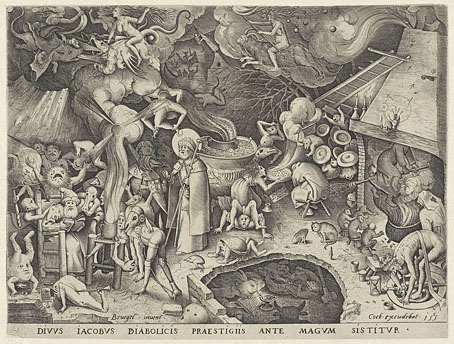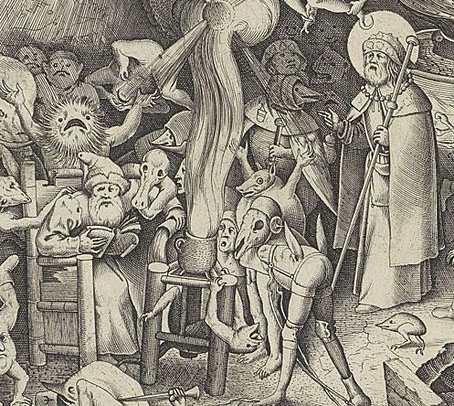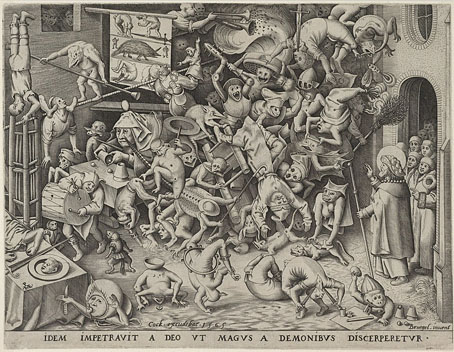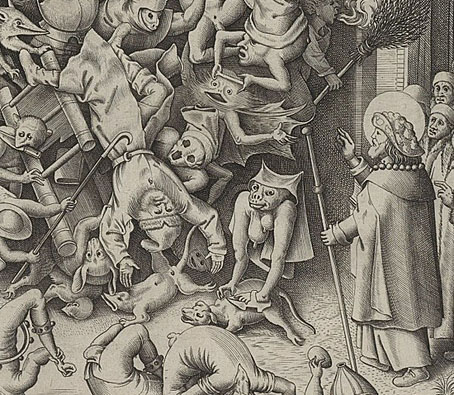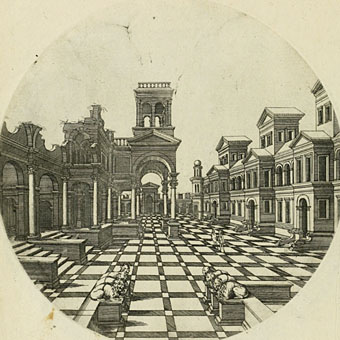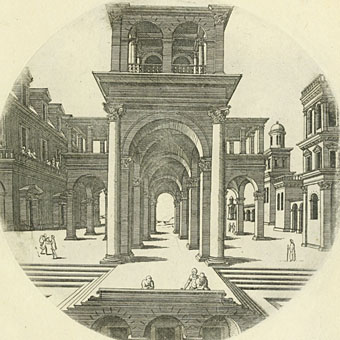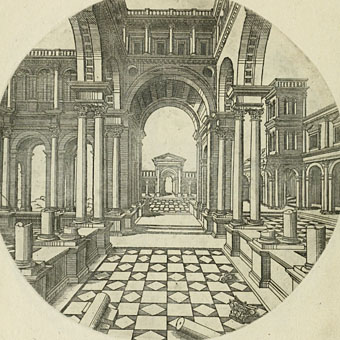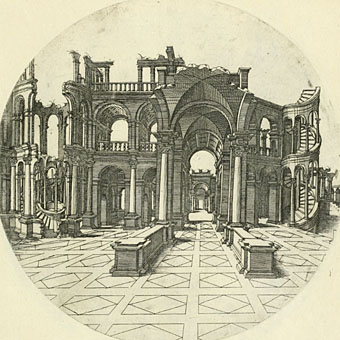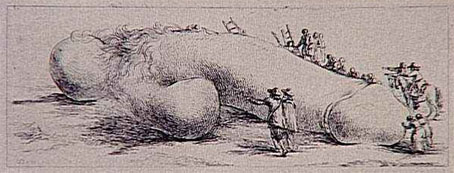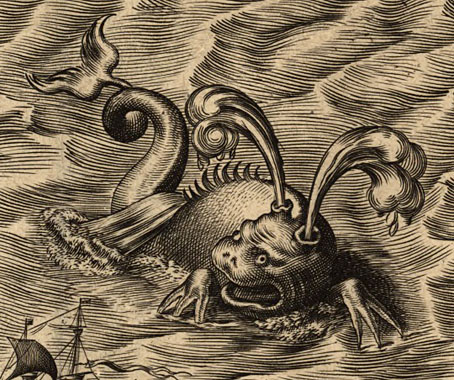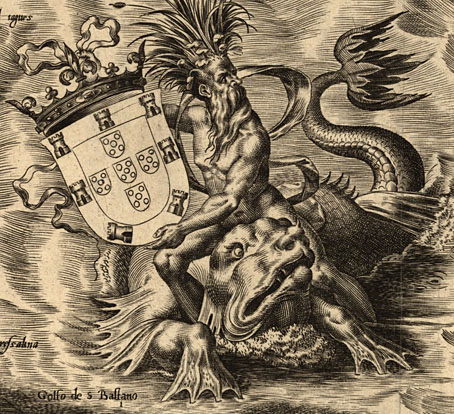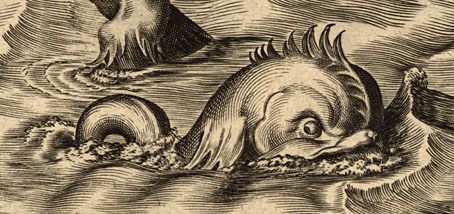From contemporary Belgian Surrealism to an older variety (Dutch/Flemish rather than Belgian per se, but it’s close enough). I’d seen prints of The Fall of the Magician before but not the earlier picture from what turns out to be a two-part set depicting an occult encounter between Saint James and the magician Hermogenes. Both prints were engraved in 1565 by Pieter van der Heyden from drawings by Pieter Bruegel the Elder, the prints being published by the print-maker with the unforgettable name, Hieronymus Cock.
Both pictures show an episode from the life of Saint James recounted in The Golden Legend by Jacobus de Varagine, a very popular collection of hagiographies compiled in the 1200s: the magician Hermogenes is hired by the Pharisees to put a stop to the miracle-working of the saint only to be confounded by the treachery of his demons. As usual with Bruegel, the drawings are replete with details that combine wild imagination with careful observation. (The confrontation of the saint and the magus is paralleled in the face-off between a toad and a cat). Seeing Bruegel’s art as engraved lines is a reminder that the comic profusion in his drawings is the start of a tradition that runs through the prints of William Hogarth to the crowded pages of early MAD magazine; the latter connection is reinforced by artist Will Elder who referred to The Fall of the Magician as a precursor of his own crowded splash panels.
Elsewhere on { feuilleton }
• The etching and engraving archive
Previously on { feuilleton }
• Bruegel’s sins
• Proverbial details
• Babel details

